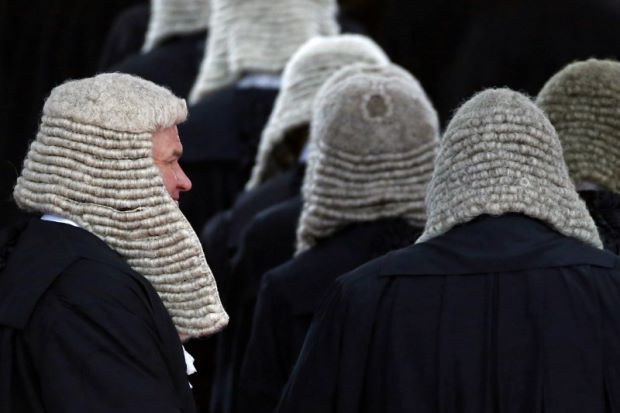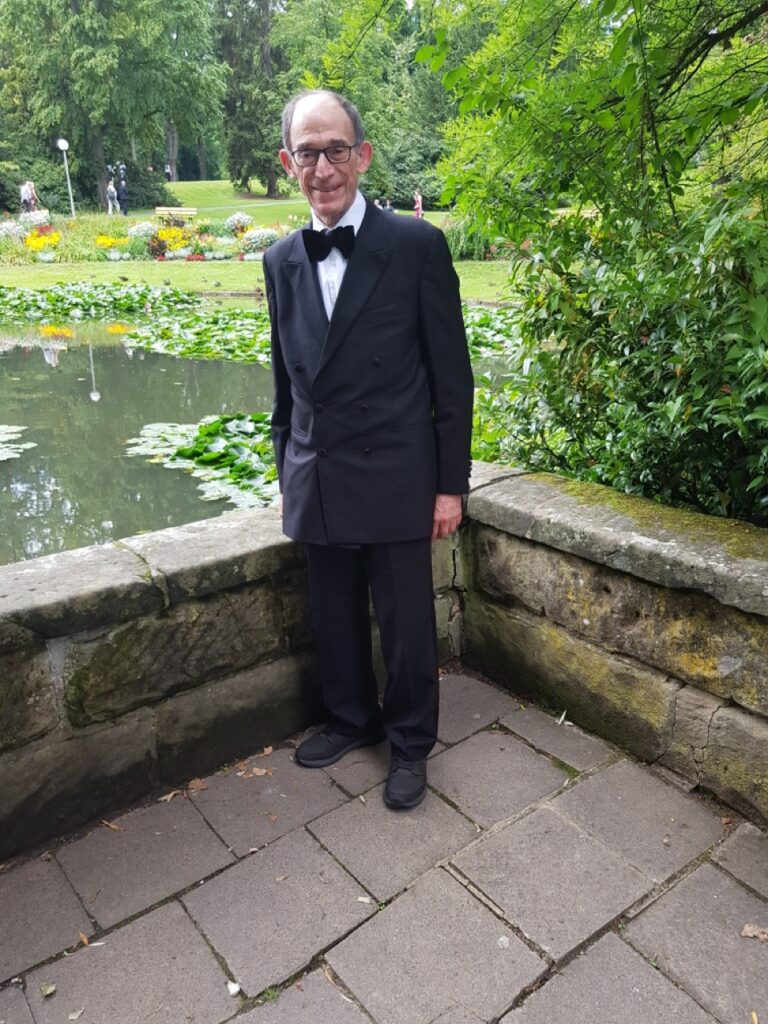
For centuries, the answer to ‘who gets Silk?’ came from the Lord Chancellor’s department. In June 2003, the Blair Government announced that England and Wales were going to go modern: the office of Lord Chancellor would be abolished, as would the rank of Queen’s Counsel.
The Bar fought back. The outcome was the establishment of an independent body – Queen’s (now King’s) Counsel Appointments (‘the panel’) – which conducts a process which has been agreed by the Bar Council and the Law Society. The fees paid by applicants finance it. Although an aim was to make it possible for solicitor advocates to seek an appointment with the assurance that they would be assessed fairly alongside barrister applicants, their numbers have never been forthcoming. Over the last 17 years, the average number of solicitor advocates who apply each year is below eight; the average number who succeed is three. This year it was one, a partner in a magic circle firm who does international commercial arbitrations.
The panel recommends an appointment; the Lord Chancellor (who, of course, was also not abolished) has to approve the list. On average, there are 105 new Silks every year since the panel started up in 2006. In 2024, a quarter were Middle Templars.
The panel is transparent. What an applicant needs to know and to do is on the website and accessible to all. There are no more secret soundings. We are now in the world of competencies. The criterion is ‘excellence in advocacy in the higher courts’. That has to be demonstrated through citing 12 cases of ‘substance, complexity or particular difficulty or sensitivity’ in which one appeared in the previous three years. In addition, applicants are asked for a judicial and a practitioner assessor for each of those cases and a total of six client assessors. Although there is some flexibility in this, for example, someone who has had a career break or whose cases keep settling, in 2024, 49% of the applicants did produce a full cohort of assessors. Those earning less than £90,000 in fees can apply to pay less than the application fee of £2,100, but in 2024, only eight out of 327 applicants did so. The 319 others would be in the top one or two per cent of earners in the United Kingdom. For those who succeed, there is an appointment fee of £3,600 in addition. There is also the cost of new robes and, one hopes, a celebration.
It is a daunting task. At least a third of the 49% were not recommended for an appointment. The applications are considered and graded by a grading pair of panel members and further considered by the full panel at a moderation meeting. The approach is that applicants should be interviewed unless the panel at this first stage considers that the applicant has ‘no reasonable prospect of success’. Every year, more and more applicants fall into the ‘no reasonable prospect’ category. In 2020, 63% of applicants were interviewed and 41% overall were recommended for appointment. In 2024, only 46% were interviewed and only 32% were recommended for appointment. Excellence is excellence.
Who are they?
As part of their transparency, the panel publishes (with the success rate for each category) statistics relating to the applicants. They are asked to indicate their gender, ethnicity, disability, age and sexual orientation (the latter is the box which the fewest applicants tick).
It must be emphasised that the panel members are not told any of this information during the selection process. Their task is carried out entirely on the basis of what the candidate and the assessors say and, if it gets that far, what emerges in the interview. There are no quotas. It is not an exercise in social engineering as much as some would like it to be. This is relevant to a tiny number of barristers of a particular age and achievement. By definition, they are not representative of the Bar at large or British society.
For several years, I have researched the outcome for Counsel. I examine the panel’s own statistics. With the list of those recommended for appointment in hand, I look at their chambers’ website entry for every one of them and look at their chambers. Does a narrative emerge? It does, and it does every year. The main facts interconnect.
To start with, people’s background. Rightly, the panel does not ask for anyone’s educational achievements, but these can be garnered from what barristers tell us on the chambers website. Most civil practitioners (who always make up about 60% of the total cohort) include these details. In 2024, 57 out of 63 who do civil work and were recommended for appointment did so. Family practitioners are less likely to cite their educational achievements. Few criminal practitioners do. In 2024, 44 out of the 63 were Oxbridge graduates, many of whom had achieved (as they tell us) a First, a double First or the highest First in their year. The others went to Russell Group universities with a number of Firsts as well. The road to Silk starts on day one of practice, and these figures are a strong indication of who, in a buyer’s market, gets pupillage, in the chambers where one is most likely to find the opportunity to develop into doing cases of substance, complexity, or particular difficulty or sensitivity.
How do we know this? In 2024, every successful applicant was a member of chambers that already had Silks. On average, there were 25 existing Silks in the chambers of civil practitioners, 10 for family practitioners and 15 for criminal practitioners. Some years, there is one or two ‘first in chambers’, but not every year. If you want a mentor, they are already in-house. In addition, relatively few chambers ever produce KCs. No more than say 100 out of the 400 sets of chambers with more than one practising barrister in them. On average, in a year 65 sets of chambers will produce the cohort. Some chambers appear every year. The outcome also tends to be London-centric, particularly in 2024: 38 out of 39 sets of civil practitioners, six out of seven sets of family law practitioners, and 20 out of 24 sets of criminal or crime and civil practitioners were in London chambers.
As for those that make up the Employed Bar, there are 3,000 of them, doing important and valued work. However, excellence in advocacy in the higher courts in substantial and complex cases does not seem to be part of the job. In the last 17 years, the average number of employed barrister applicants (including CPS crown advocates who do appear in the higher courts) is fewer than four. The average number of successful ones is one. In nine of those years, none were successful. In 2024, it was again zero.
In the February Counsel, the Chair of the Bar wrote that she would work closely with the Bar Council’s Equality, Diversity and Social Mobility Committee to understand better why fewer women are applying for silk. That was surprising because the truth is the opposite: more women apply for Silk each year. The numbers had been in the 40s for some years. From 2016, they went up into the 50s and then the 60s and then to the 70s. In 2024, it was a record 85. Women in most years are proportionally more successful than men in their applications. This peaked in 2021 with a 62.5% success rate (vs. 27.7% for men).
There is no limit on the number of times one can apply. There are certainly no guarantees that a repeat application will succeed. In 2024, 40% of all applicants had applied at least once in the previous three years. Their overall success rate was almost the same as that for first-time applicants – it often is less – but 74 were weeded out before interview as having no reasonable prospect of success, though 20 of these had been interviewed in the past. In terms of percentages, those aged under 40 do best – 56% success this year – while those over 50 did worst (25%) and those in their forties were at 38%.
Note is taken about ethnicity. In 2024, 18% of applicants declared an ethnicity other than white. In total 30% of those from an ethnic minority background were recommended for appointment vs. 33% for those who are white. These proportions have fluctuated over the years. Looking at the seven years between 2017 and 2023, there were 139 Asian/British Asian applicants with an overall success rate of 51%. There were 45 Black applicants with an overall success rate of 35%. There was one Black barrister recommended for appointment in 2023, but none in 2024.
Although unsuccessful candidates form part of the statistics, one, of course, does not know anything about them individually. Each is sent a feedback letter, so they are aware of why the decision was made. Only if unsuccessful applicants were willing to come forward could one examine whether we are talking about something more than individual results.

Master David Wurtzel has been a Bencher since 2001. He practiced in chambers, primarily in crime, for 27 years. He has been particularly involved in the matter of vulnerable participants in the justice system. He contributes to Current Law Week, and is on the board of The Advocate’s Gateway.

